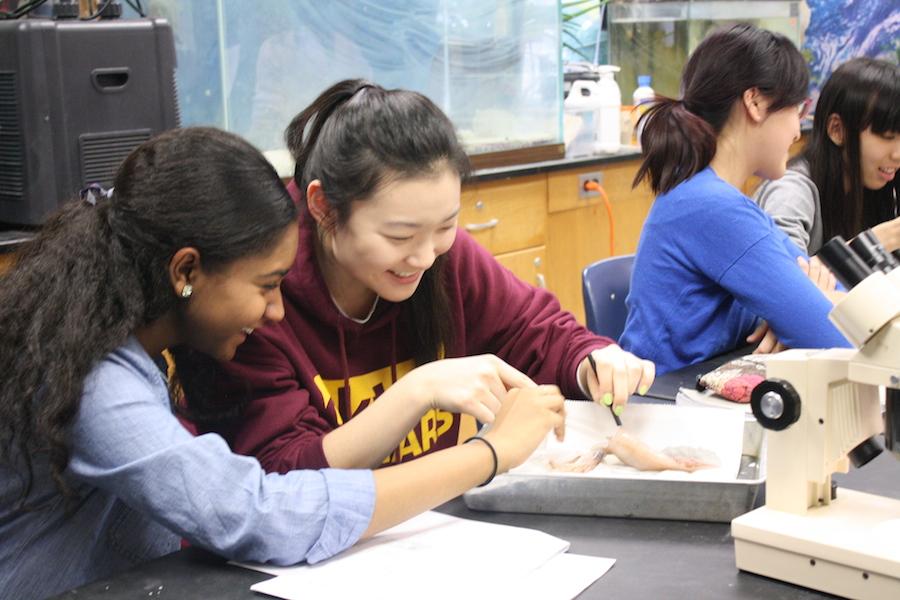Marine biology students dissect squids
December 4, 2013
Though freshman biology is known for its fetus pig dissection, science classes that students participate in later in their high school years also include many interesting dissections and experiments. One incredibly unique experience is the squid dissection, conducted on Dec. 4, in the marine biology classes.
“It was so interesting to dissect a squid for the first time,” junior Janie Choi said. “The experience is so different from what I imagined it would be and this is definitely a unique experience that I won’t get to do in any other class.”
Students first removed a piece of the tentacles to see under the microscope in order to examine the miniature teeth within each tentacle. Afterwards students removed a piece of the mantle in order to examine the expanded and constricted segments on the squid. The siphon, radula and pinnate gills were also observed in a similar manner both in the squid itself and then under the microscope.
“Dissecting the squid allowed me to better see and understand the anatomy of deep sea organisms,” junior Shadin Ahmed said. “It was fascinating and exciting to learn through this hands-on experience.”
Some of the most interesting parts that were dissected include the pen, the ink sac and the two hearts. The pen is the part of the body that works like a skeleton in keeping the basic shape of the squid, and can be removed with careful movements until the entire length is outside.
The ink sac is on the underneath of the mantle and requires various cuts and rearrangements in order to see. Once seen however, the shimmering silver sac reveals a lot about the squid’s functions and protection from predators. The two hearts, which lie at the base of the pinnate gills, are incredibly different from a human heart and show the contrasts of deep sea organisms to mammals.
“Discovering all the different parts of the squid was both gross and engaging,” Choi said. “All of the parts were so different from previous dissections we conducted in past years.”
The dissection provided students with an interesting way to learn about the organisms in the deep sea that are covered in their course. A valuable experience for both students who will continue onto the Oceanography Laboratory and those who will continue onto other labs, this experience provided a basis for learning and experimentation.
“Dissecting a squid is definitely a way I want to spend my Saturday night,” junior Sam Veroneau said. “It was an extremely cool experience.”






